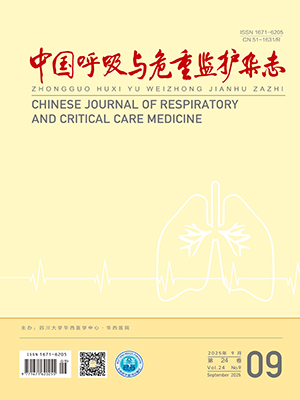| 1. |
Borie R, Wislez M, Antoine M, et al. Pulmonary mucosa-associated lymphoid tissue lymphoma revisited. Eur Respir J, 2016, 7(4): 1244-1260.
|
| 2. |
Yamashita H, Ueda Y, Tomita K, et al. Mucosa-associated lymphoid tissue lymphoma of the trachea in a patient with breast cancer. Intern Med, 2015, 54(16): 2041-2044.
|
| 3. |
Wislez M, Cadranel J, Antoine M, et al. Lymphoma of pul-monary mucosa-associated lymphoid tissue: CT scan findings and pathological correlations. Eur Respir J, 1999, 14(2): 423-429.
|
| 4. |
Ekstrom SK, Vajdic CM, Falster M, et al. Autoimmune disorders and risk of non-Hodgkin lymphoma subtypes: a pooled analysis within the InterLymph Consortium. Blood, 2008, 111(8): 4029-4038.
|
| 5. |
Arai H, Tajiri M, Kaneko S, et al. Two surgical cases of thymic MALT lymphoma associated with multiple lung cysts: possible association with Sjögren's syndrome. Gen Thorac Cardiovasc Surg, 2017, 65(4): 229-234.
|
| 6. |
Conconi A, Martinelli G, Thieblemont C, et al. Clinical activity of rituximab in extranodal marginal zone B-cell lymphoma of MALT type. Blood, 2003, 102: 2741-2745.
|
| 7. |
Bae YA, Lee KS, Han J, et al. Marginal zone B-cell lym-phoma of bronchus-associated lymphoid tissue: imaging findings in 21 patients. Chest, 2008, 133(2): 433-440.
|
| 8. |
Tian P, Wang Y, Wan C, et al. CT-guided needle biopsy in the diagnosis of lung adenocarcinoma accompanied by extranodal marginal zone lymphoma of mucosa-associated lymphoid tissue: a rare combination. Int J Clin Exp Pathol, 2015, 8: 2074-2078.
|
| 9. |
Stefanovic A, Morgensztern D, Fong T, et al. Pulmonary marginal zone lymphoma: a single centre experience and review of the SEER database. Leuk Lymphoma, 2008, 49: 1311-1320.
|
| 10. |
Zhang WD, Guan YB, Li CX, et al. Pulmonary mucosa-associated lymphoid tissue lymphoma: computed tomography computed tomo-graphy imaging findings and follow-up. J Comput Assist Tomogr, 2011, 35: 608-613.
|




